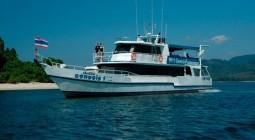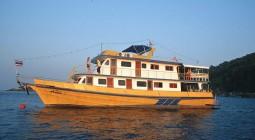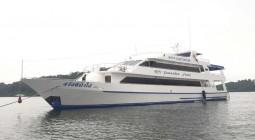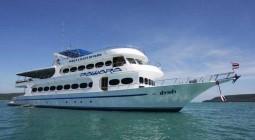The word Nitrox is seen on websites, dive shops, boats, & tanks more than in the past. Some people know all about Nitrox, such as its benefits and common uses, but for many of us it’s confusing. This page explains in simple terms and without unnecessary jargon what Nitrox is, its benefits and why & when it’s better than regular air. Compare air to Nitrox mix for scuba diving. Which is best? Further down the page you can read about the Enriched Air Nitrox certification course.
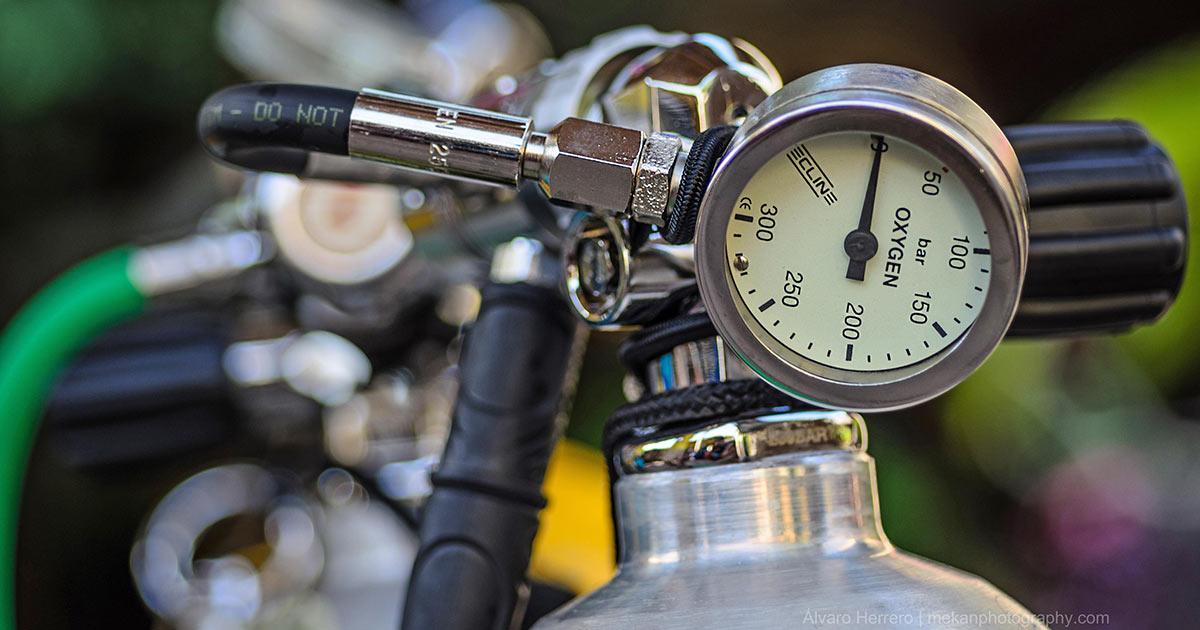
There are many unanswered questions and considerations about scuba diving on Nitrox compared to breathing regular air.
- What is Nitrox?
- Nitrox Diving Benefits
- Nitrox Depth Limits
- Common Myths
- Who Should Use Nitrox?
- How much is Nitrox?
- Nitrox Certification Course
- Are there any drawbacks?
- Nitrox Pros & Cons
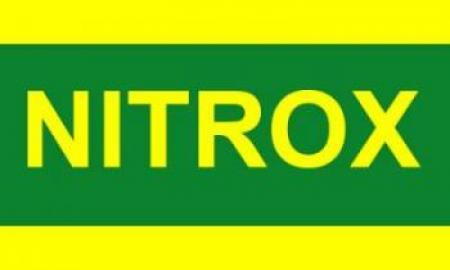
What is Nitrox for scuba diving?
Nitrox is a general term used for any mixture of air that has a higher concentration of oxygen than the 21% which we breathe on land or from a regular scuba tank.
The air we breathe on land at normal altitudes is made up of 21% oxygen, 78% nitrogen and the final 1% is a combination of argon, carbon dioxide, water vapour and a few other gases. A regular scuba tank is filled with compressed air, and therefore has 21% oxygen.
Nitrox is generally considered to be any mixture of gases with more than 21% oxygen. The most-common mixture is 32%, but 36% is also used by some scuba divers. More than 40% oxygen is uncommon. The best Nitrox mix for you depends on several factors, such as the planned dive profile. In general Nitrox divers start off with 32%.
What are the Benefits of Nitrox Scuba Diving?
There are several benefits of diving on Nitrox, they include your health & safety between & after repetitive dives, and how long you are able to stay at depth.
Health & Safety Benefits: Every certified scuba diver should understand the sport’s most-common risk, which is DCS (The Bends). DCS is caused by too much nitrogen absorbed into the body after repetitive deep or unsafe diving profiles. Breathing air which is enriched with more oxygen reduces the amount of nitrogen and therefore reduces the risk. A dive on Nitrox will be much safer than the same dive profile on air.
Deep for Longer: Other than health & safety benefits, Nitrox scuba dives enable you to stay at depth for longer than air does. Due to the increased oxygen causing reduced nitrogen levels, you are able to stay at a particular depth for longer than if you are breathing regular air. A diver on air needs to start ascending to the surface sooner than a diver on a Nitrox mix because of the build-up of nitrogen in the diver’s bloodstream and tissues. The NDL (No Decompression Limit) is the maximum length of time you can stay at a particular depth and still be able to slowly surface without having to perform a Decompression Stop*. Nitrox divers are able to extend their NDL because the gas that they are breathing has less nitrogen than a diver’s on air.
A Decompression Stop is not the same as a Safety Stop, but they are done for the same end result. A safety stop is not mandatory, but it’s safer than proceeding straight to the surface. A Decompression Stop is absolutely necessary for any diver who has exceeded their NDL.
Shorter Surface Intervals: Because you will have absorbed less nitrogen than you do on air, your body needs less time to ‘off gas’ before it is safe to dive again. Therefore, diving on Nitrox vs air enables you to have shorter breaks between each dive.
Feel Better Between Dives: Many people believe and report that diving on Nitrox compared to air results in less tiredness between and after dives. This is difficult to prove scientifically, but there is plenty to support the theory.
How Deep Can you Dive With Nitrox?
Diving on 32% Enriched Air your maximum depth is 33 metres (108 feet).
Diving on 36% Enriched Air Nitrox your maximum depth is 29 metres (95 feet).
When you compare the difference between Nitrox and air you may be surprised to discover that your maximum depth limit on Nitrox is shallower, not deeper, than when diving on air. Reasons for this are explained further down this page. Nitrox is a very useful tool for having safer dives on air profiles, or for extending your bottom time on moderate-depth recreational dives. But it does not enable you to dive deeper than on air.
There are written & printed Nitrox dive tables also known as a Nitrox depth chart. These charts and tables use a combination of Nitrox diving calculations or a Nitrox calculator. The Nitrox dive tables calculator takes several factors into account that are not discussed on this ‘jargon-free page.’ When you take the Nitrox diving course, you will learn a lot of the scientific calculations, but mainly how to analyse your tank’s mixture and therefore your maximum depth for each dive. PADI Nitrox dive tables and the PADI Nitrox dive tables PDF are readily available for those who do the PADI Enriched Air Nitrox course.
Myths about Diving on Nitrox
The main myth about diving Nitrox vs air is that you will be able dive deeper. This is not true, and as already mentioned your maximum depth will actually be a little shallower. The Nitrox max depth planner and Nitrox dive planner will explain fully.
Other myths about Nitrox diving include the length of your dive, flying after scuba diving, and its taste.
Although you are breathing more oxygen and less nitrogen, the amount you breathe and the rate you consume the contents of your tank is not affected by the mixture. In fact, you’re more likely to use your tank’s contents more quickly on Nitrox than on air simply because you will be at deeper depths for longer.
Your ‘no fly time’ after scuba diving is directly connected to the amount of excess nitrogen your body has absorbed and waiting for it to escape before you go to altitude. It is true that a Nitrox diver should have absorbed less excess nitrogen than a diver on air who has just completed the same dives. But instead of risking flying less than 24 hours after diving, it is generally regarded as a safe length of time regardless of the gas mixture used during the dives. In addition, Nitrox divers usually do repetitive dives, so this supports waiting the full 24 hours.
Enriched Air Nitrox tastes exactly the same as regular air. There is no difference in taste caused by the mixture.
Should I Dive With Nitrox?
Who should and who shouldn’t dive with Nitrox depends on too many factors. Some people just like it for the added safety, while others want to stay at depth for as long as possible. In most cases Enriched Air Nitrox comes with an additional cost, which may be affect your decisoion.
Liveaboard divers: Divers on liveaboard safaris are ideal candidates for diving on Nitrox. This is because they dive up to four times per day. Repetitive diving obviously causes more nitrogen to build up with the diver’s body, and reducing this has benefits explained above. Nitrox is available on most of our Similan liveaboards, and on several boats it’s available for free. The boats offering free Nitrox include MY Genesis 1, Marco Polo, Sawasdee Fasai & Pawara.
Underwater Photographers: In an attempt to get the perfect shot, underwater photographers tend to dive a different profile to fun divers. They may want to spend as much time as possible at a certain depth, and then finish their dive as quickly as is safe. Therefore, diving on Nitrox is ideal for them.
Day Trip Divers: Day trip divers don’t normally gain much benefit from Nitrox diving, unless they’re doing several day trips in a row. Nitrox is available on most of our Similan Islands diving day trips at an extra cost.
Deep Dive Sites: There are some dive sites, such as Koh Bon Pinnacle, where most or all of the dive site is quite deep and in open water. Here divers may need to perform a negative entry due to potential currents. Then after descending down to the pinnacle or reef, they want to spend as much time there as possible, instead of ascending slowly while circling a reef or drifting along a wall. For this type of dive site diving on Nitrox can offer great benefits. Remember that diving on Nitrox does not enable you to dive deeper, but it does give you the chance to stay at depth for longer than on air.
Diving Professionals: Divemasters and diving instructors who are in the water most days of the week can benefit from diving on Nitrox. Even though their customers or students are on air, the professionals can follow an air profile, but are diving more safely due to the fact that they are breathing Enriched Air Nitrox.
How Much Does Nitrox Cost?
Nitrox fills generally cost $5 - $10 per tank. The price depends on which boat you’re diving on. As already mentioned, some of our liveaboard diving boats offer free Nitrox fills, and others charge for it. There is little or no cost to the dive centre or boat, but it’s important to understand that the machinery used for making Enriched Air Nitrox is expensive to buy and it requires constant maintenance.
Learning to Dive on Nitrox
The Enriched Air Nitrox Course is available from all of the major scuba diving organisations, such as PADI, CMAS, BSAC, SSI, SDI/TDI etc. Most of them have their own slightly different name for the course. Prices also vary, as does exactly what is covered. It may surprise you to know that you can complete this course without diving. It’s all theory, and the only practical skill that you need to perform is to show that you can analyse a tank’s contents and make a calculation from the displayed reading.
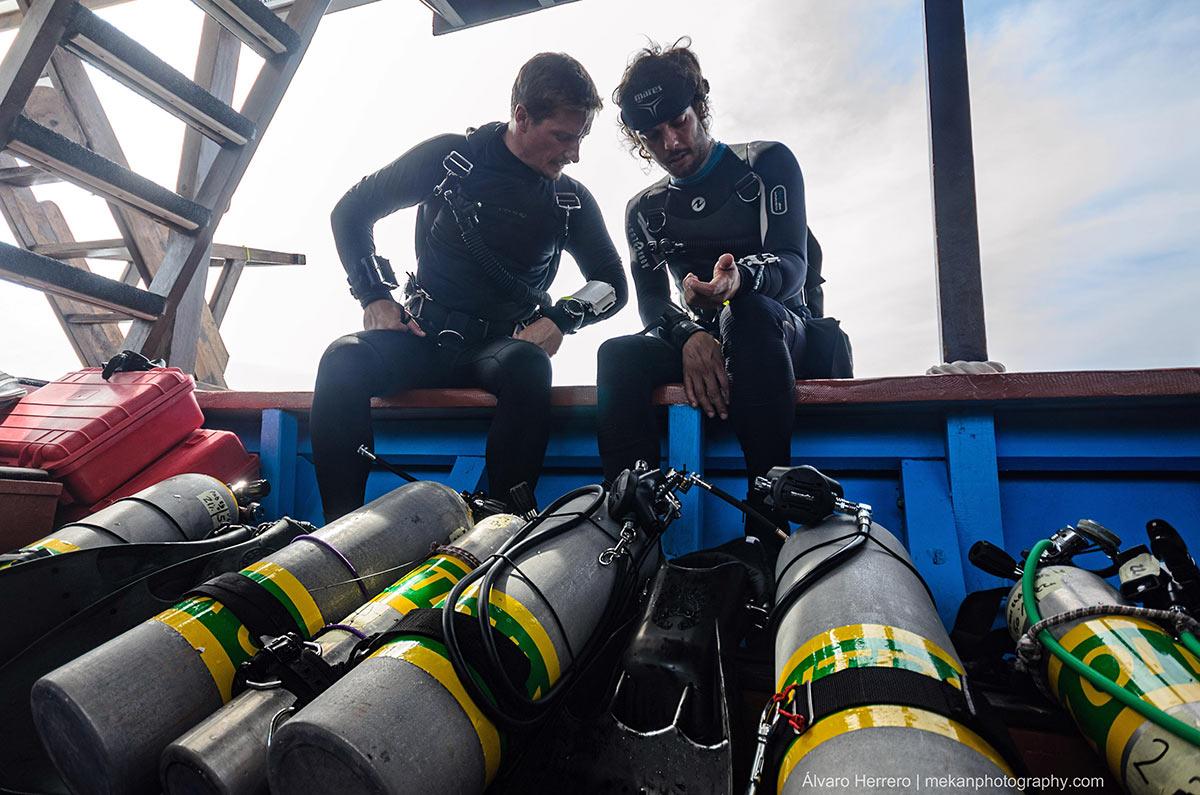
However, most divers who take the Enriched Air Nitrox course will want to dive using it as soon as possible. Normally the dive centre or liveaboard boat where you do the course will offer some free Nitrox fills as part of a package. This may be a few tanks or the remainder of the liveaboard diving cruise.
The Nitrox diving course price depends on which organisation and dive centre you choose. PADI may be the world leaders in scuba diving tuition but they usually require every student to pay for materials, even if the PADI Nitrox manual download is available. PADI Nitrox certification requirements are generally no different to most other agencies. SDA Nitrox certification is popular, as is SSI, CMAS and the others.
Depending on which organisation you do the course with and your Enriched Air Nitrox instructor, you may learn about some of the following. Nitrox formula, Nitrox calculator bottom time, Nitrox calculator app, Nitrox NDL calculator, & Nitrox tables PADI. Normally, the following are for more-advanced enriched air skills, courses and uses. Nitrox blending chart, Trimix blending calculator, & gas blending app.
What are the Disadvantages of Nitrox Diving?
There are some disadvantages of diving on Nitrox, which include the shallower maximum depth and potential risk of Acute Oxygen Toxicity. For a normal diver who dives safely within the limits there are no disadvantages other than any financial cost of tank fills. But it is very important to understand that there are potential risks not associated with diving on air.
Oxygen is essential to life, but too much of it can be dangerous in high concentrations. This is especially true under pressure, for example while at depth. And the danger is twofold for the following reasons.
The amount of exposure to excess oxygen
The amount of exposure is increased because of the higher percentage of oxygen in the mixture, inhaled under pressure at depth. So, you’re getting more of the gas, and it’s effectively being forced into your system because you’re breathing it under pressure.
The length of the exposure to excess oxygen
The length of the exposure is because you’re able to stay these depths for longer periods of time than you would normally do so when breathing air.
Compared to breathing air, diving on Nitrox increases the risk of Acute Oxygen Toxicity. On air it becomes a danger at depths of around 67 metres, but when diving on Nitrox it is much more within reach of recreational scuba divers. In fact, it can be a potential risk at just 40 metres. The exact figures depend on many factors, such as the health, fitness & workload of the diver, the water conditions, the mixture ratio, and of course the time & depth, and time spent at depth. Such calculations involve ‘Partial Pressure of Oxygen’ often referred to as PPO2 Formula or PPO2 Calculator. But much of this you will learn on your Enriched Air Nitrox Diving Course. Your diving computer will enable you to change its settings once you have analysed your tank before each dive. From then you can normally just follow the instructions and information from your dive computer.
What are the Pros and Cons of Nitrox Diving?
The pros & cons of Nitrox diving are that you get something in one hand but lose something from the other. It’s safer with regards to DCS and you can stay at depth for longer, but you can’t go as deep as on air, and you need to be aware of other risks. Nitrox diving does not make your dive longer than breathing air under the same conditions. But even if you get your Nitrox fills for free, you are limited in your maximum depth due to the PPO2 that can lead to Acute Oxygen Toxicity.
In general, there are more gains than there are losses when you compare Nitrox to air. For most recreational scuba divers, especially on our Similan diving liveaboards, the depth limits don’t matter because they are greater than the 30-metre limits imposed by nearly every boat operator. Therefore you’re getting longer bottom times without a sacrifice. This is especially a bonus if you’re lucky enough to be on one of our boats that offer Nitrox for free. So, what are you waiting for? Browse our pages or get in touch and let’s find the best Similan Island diving trip for you.

